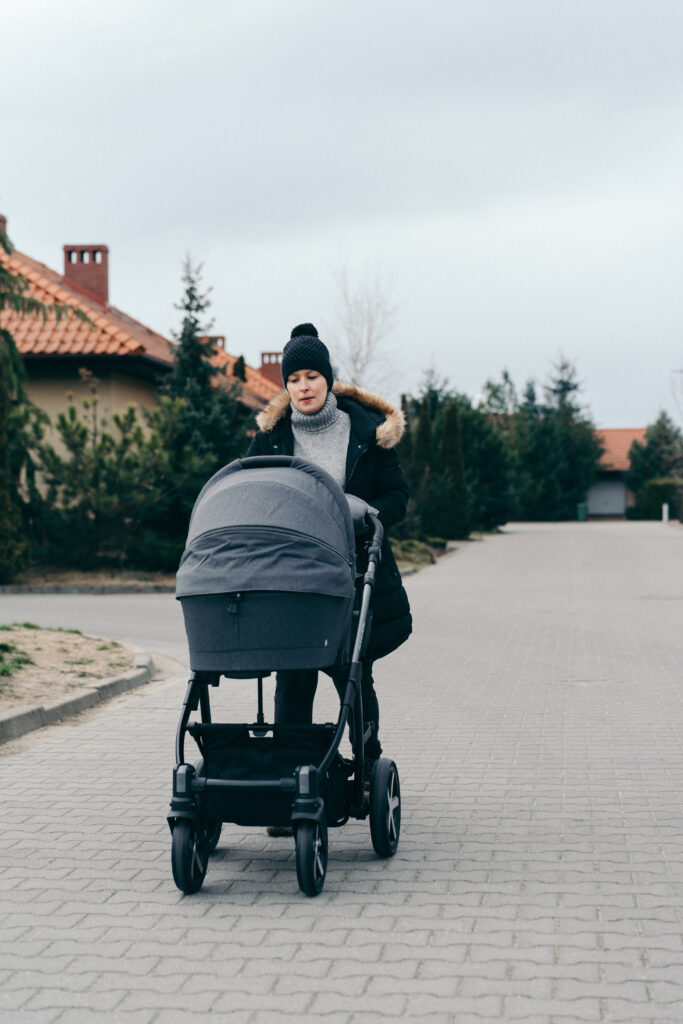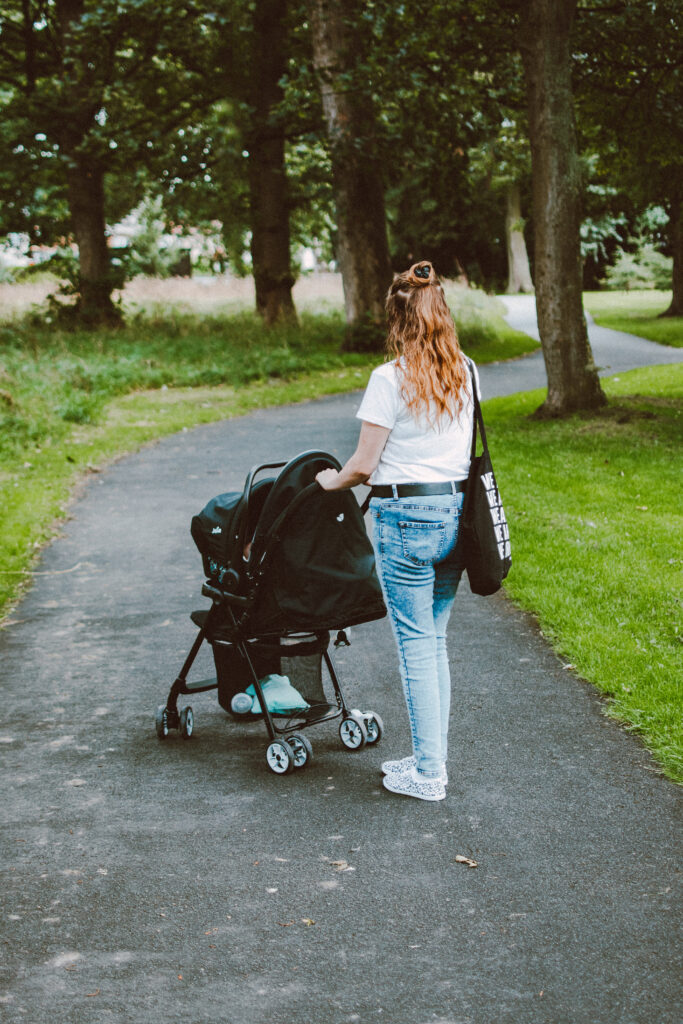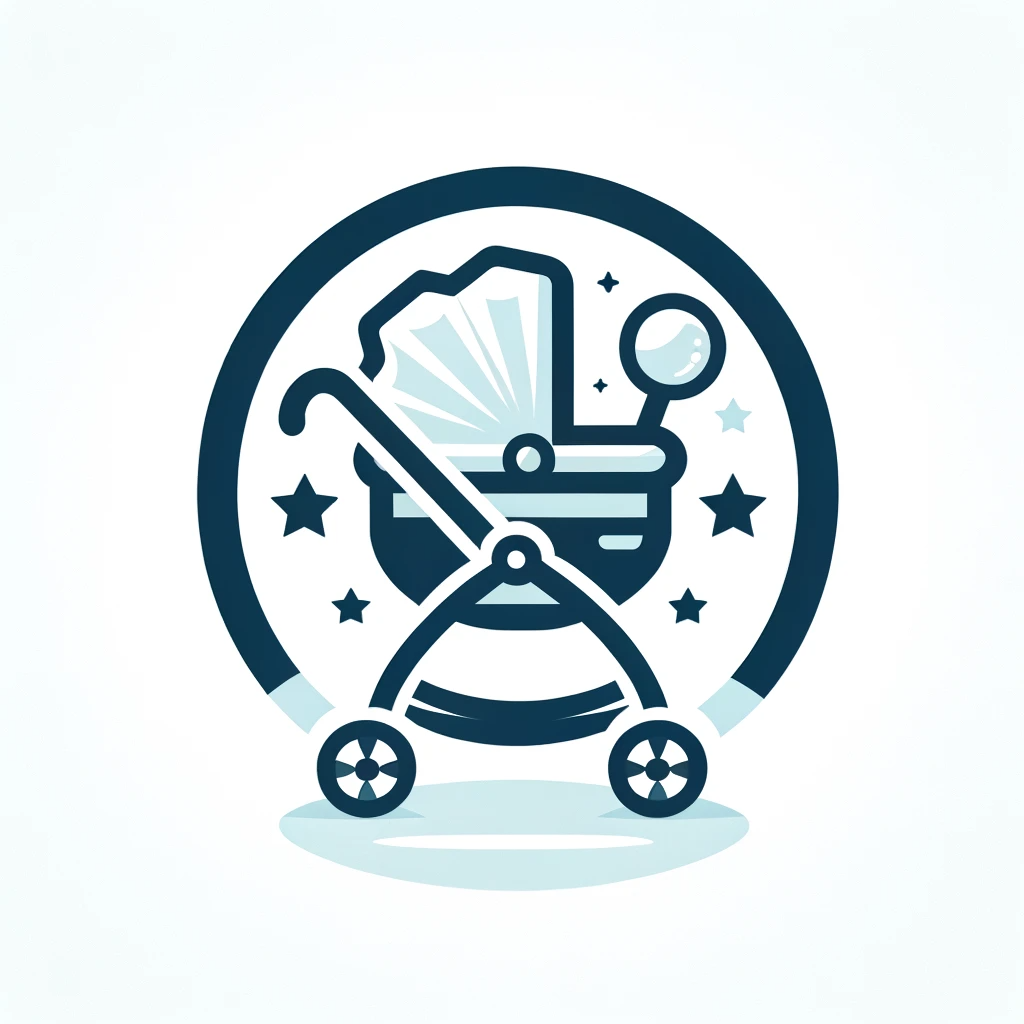Are you struggling with finding the best way to store your stroller when it’s not in use? Don’t worry, we’ve got you covered! In this article, we will explore some practical and space-saving solutions to help you keep your stroller safe and easily accessible when you need it, without cluttering up your home. Whether you have limited storage space or simply want to maximize efficiency, we have some handy tips and tricks for you. Let’s find the perfect spot for your stroller together!
Cleaning and preparation
Remove any detachable parts
Before storing your stroller, it’s important to remove any detachable parts such as the canopy, baskets, or seats. This ensures that each component can be thoroughly cleaned and dried separately, preventing any dirt or moisture from accumulating in hard to reach areas.
Wash the fabric
To keep your stroller looking and smelling fresh, it’s essential to wash the fabric regularly. Check the manufacturer’s instructions for washing guidelines, but most stroller fabrics can be hand-washed with mild detergent or machine-washed on a gentle cycle. Remember to remove any padding or inserts before washing and allow the fabric to air dry completely before reattaching them.
Clean the frame
The frame of a stroller often collects dirt, dust, and debris during regular use. To clean it, simply wipe down the entire frame with a damp cloth and mild soap. Pay extra attention to the nooks and crannies where dirt may accumulate. Avoid using harsh chemicals or abrasive materials that could damage the frame’s finish.
Dry the stroller
After cleaning both the fabric and frame, it’s crucial to ensure that everything is thoroughly dried before storage. Hang the fabric and detachable parts in a well-ventilated area or lay them flat on a clean surface, preferably outdoors on a sunny day. For the frame, wipe off any excess moisture and give it enough time to air dry completely. This step is essential to prevent the growth of mold or mildew.
Folding the stroller
Follow the manufacturer’s instructions
Every stroller has its own unique folding mechanism, so it’s vital to consult the manufacturer’s instructions to properly fold your stroller. Following the instructions ensures that you don’t force or damage any parts during the folding process, and it also helps maintain the stroller’s structural integrity.
Secure the stroller in its folded position
Once your stroller is folded, make sure to secure it in its folded position. Some strollers have built-in locking mechanisms, while others require the use of a strap or latch to keep them closed. Double-check that the stroller is securely folded to prevent any accidental unfolding during storage.
Lock the folding mechanism
If your stroller has a locking mechanism, engage it to keep the stroller compact and prevent any accidental unfolding. This is especially important if you plan to store the stroller vertically or in a tight space. Locking the folding mechanism also adds an extra layer of safety, especially if you have young children who may accidentally unlock it.
Check for any loose parts before storing
Before putting your stroller away, take a moment to inspect it for any loose parts. Check the wheels, handlebars, and any other movable components to ensure they are securely attached. Tighten any loose screws or nuts, and address any issues promptly to prolong the life of your stroller and prevent accidents.

Choosing the storage location
Consider the space available
Before deciding on a storage location for your stroller, consider the space available in your home or garage. Ensure that the area you choose is large enough to accommodate the folded stroller and allows for easy access whenever you need it.
Avoid extreme temperatures and humidity
Extreme temperatures and high humidity can affect the quality and longevity of your stroller. Avoid storing it in areas prone to extreme heat, freezing temperatures, or excessive moisture. These conditions can cause the fabric to deteriorate, weaken the frame, and promote the growth of mold or mildew.
Keep it away from direct sunlight
While it’s important to choose a well-ventilated area for your stroller, it’s equally important to protect it from direct sunlight. Prolonged exposure to sunlight can cause the fabric to fade or become brittle, and may also affect the integrity of certain plastic or metal components. Choose a storage location away from windows or cover the stroller with a breathable fabric if storing it in a sunny room.
Select a dry and clean area
To maintain your stroller’s cleanliness and prevent any damage, select a storage location that is dry and free from dirt, dust, and other potential contaminants. Avoid storing it on the floor or near sources of dirt or water. A clean and dry area will help preserve the stroller’s condition and ensure it’s ready for use whenever you need it.
Storing indoors
Use a stroller storage bag
Using a stroller storage bag can help protect your stroller from dust, dirt, and general wear and tear while in storage. These bags are specifically designed to fit most stroller sizes and provide an extra layer of protection. Make sure to choose a bag made of durable and breathable material that allows the stroller to properly air out.
Hang the stroller on a wall or door
If you have limited floor space, consider hanging your stroller on a wall or door. You can use hooks or a wall-mounted stroller hanger specifically designed for this purpose. Hanging the stroller not only saves space but also keeps it off the ground, reducing the risk of accidental damage.
Place it in a closet or under a bed
If you have a spacious closet or an area under your bed, these can serve as convenient storage locations for your stroller. Make sure the area is clean and free from excessive dust or moisture. If possible, consider placing the stroller in a protective bag or cover to further shield it from any potential hazards.
Consider using a stroller storage rack
If you have multiple strollers or simply want a dedicated storage solution, a stroller storage rack may be the ideal option. These racks are designed to hold one or more strollers securely, allowing for easy access and organization. Look for a sturdy and adjustable rack that can accommodate your stroller’s size and weight.

Storing outdoors
Use a stroller cover or tarp
When storing your stroller outdoors, it’s crucial to protect it from the elements. A stroller cover or tarp provides an extra layer of protection against rain, snow, UV rays, and other potentially damaging factors. Choose a cover that is waterproof and UV-resistant to ensure maximum protection for your stroller.
Store it in a shed or garage
If you have a shed or garage, storing your stroller inside is the best option when it comes to outdoor storage. These enclosed spaces offer protection from direct sunlight, rain, and extreme temperatures. Make sure the shed or garage is well-ventilated to prevent condensation and mildew growth.
Consider using a weatherproof storage box
If you don’t have access to a shed or garage, consider investing in a weatherproof storage box specifically designed for outdoor use. These boxes are typically made of durable materials and have tight seals to keep moisture and pests out. Place the stroller inside the box and secure the lid tightly to ensure maximum protection.
Protect it from natural elements
When storing your stroller outdoors, try to find a location that offers some natural protection from the elements. For example, place it against a wall or under a covered porch to shield it from direct rainfall or snow. Avoid areas prone to excessive wind or where the stroller could be easily bumped or knocked over.
Additional storage tips
Store it away from children’s reach
If you have young children at home, it’s important to store the stroller in a location where they can’t access it unsupervised. Strollers contain moving parts, and allowing children to play with them unsupervised can lead to accidents or damage to the stroller. Choose a storage location that is out of their reach or use safety measures such as childproof locks.
Label the stroller storage location
To easily locate your stored stroller, consider labeling the storage location. This can be as simple as adding a tag or sticky note indicating where the stroller is kept. Labeling ensures that you can quickly find it when needed, especially in busy or cluttered storage areas.
Inspect it periodically for any damage
Even in storage, it’s important to periodically inspect your stroller for any signs of damage. Check for any loose screws or parts, tears in the fabric, or any other issues that may have occurred during storage. Addressing these problems promptly can help prevent further damage and ensure your stroller is safe for future use.
Follow the manufacturer’s recommendations
Every stroller comes with specific storage recommendations from the manufacturer. Make sure to read and follow these instructions carefully to ensure you are storing the stroller correctly. Manufacturers often provide valuable tips and guidelines to help preserve the stroller’s quality and functionality during storage.

Storing for long periods
Remove batteries if applicable
If your stroller has battery-operated features such as lights or sounds, it’s crucial to remove the batteries before storing it for an extended period. Batteries left inside the stroller can corrode, leak, and potentially damage the electronics. Safely store the batteries separately, following proper disposal guidelines if necessary.
Avoid placing heavy objects on top
To prevent any unnecessary strain or damage, avoid placing heavy objects on top of your stored stroller. Even when folded, strollers have delicate parts that can be easily crushed or deformed under excessive weight. Keep the storage area clear of any items that could potentially damage the stroller.
Check the fabrics for mildew or mold
During long periods of storage, it’s essential to periodically check the stroller’s fabric for any signs of mildew or mold growth. If you notice any, immediately address the issue by cleaning the affected areas with a mild solution of water and vinegar or a specialized mold and mildew cleaner. Allow the fabric to dry completely before returning it to storage.
Reassemble the stroller properly before use
When you’re ready to use your stroller again after a long period of storage, make sure to reassemble it properly. Follow the manufacturer’s instructions to ensure all components are correctly attached and secured. Take the time to inspect the entire stroller for any signs of damage or wear that may have occurred during storage. By reassembling the stroller correctly, you can ensure its safe and efficient operation.
Traveling with a stroller
Choose a suitable travel bag or case
If you plan to travel with your stroller, investing in a suitable travel bag or case can protect it from damage during transit. Look for a bag that is sturdy, padded, and large enough to accommodate your folded stroller. Consider one with wheels or straps for easy transportation.
Secure the stroller inside
When packing your stroller for travel, ensure it is securely strapped or fastened inside the travel bag or case. This prevents any unnecessary movement or shifting during transit, which could lead to damage. Make use of any interior straps or secure attachment points provided by the bag or case.
Protect delicate parts with padding
To provide extra protection during travel, consider using padded materials to cushion delicate parts of the stroller. Wrap the handlebars, wheels, and other vulnerable areas with soft cloths or foam padding. This minimizes the risk of scratches or dents caused by friction or impact during handling.
Keep it easily accessible during the trip
If you’re traveling by air or other public transportation, make sure to keep your stroller easily accessible during the trip. This allows for smooth check-ins or transfers and ensures that you have it readily available when needed. Consider using a wheeled travel bag or attaching a luggage tag with your contact information to the stroller for easy identification.
Considerations for multiple strollers
Stack or nest multiple strollers
If you own multiple strollers and need to store them efficiently, consider stacking or nesting them to save space. Make sure each stroller is securely folded and locked before stacking them on top of each other. Alternatively, nest smaller strollers inside larger ones to maximize space utilization.
Label each stroller for identification
To avoid confusion or mix-ups, label each stroller when storing multiple ones. Use tags, labels, or colored tape to identify each stroller, making it easier to locate a specific one when needed. This can be especially helpful if the strollers belong to different children or have different configurations or features.
Rotate the strollers periodically
To prevent any damage from extended periods of pressure or weight, rotate your strollers periodically if you’re storing them stacked or nested. This helps distribute the load evenly and minimizes the risk of any components getting permanently deformed. Rotating them every few months is generally sufficient to maintain their structural integrity.
Allocate sufficient storage space
If you have multiple strollers, it’s essential to allocate sufficient storage space to accommodate all of them. Trying to cram them into a small area can lead to damage or limited access. Plan your storage area accordingly, ensuring each stroller has enough space to be properly stored and retrieved without difficulty.
Selling or donating a stroller
Clean and sanitize the stroller
Before selling or donating your stroller, it’s crucial to clean and sanitize it thoroughly. This ensures that the new owner or recipient receives a clean and safe product. Follow the cleaning guidelines mentioned earlier to wash the fabric, clean the frame, and remove any dirt or debris. Pay extra attention to areas that may have been overlooked during regular cleaning.
Check for any recalls or safety issues
Before selling or donating a stroller, check if there are any recalls or safety issues associated with the specific model. Visit the manufacturer’s website or the relevant consumer product safety agency to verify that your stroller is safe and free from any potential hazards. Disclose any relevant information to the new owner or recipient to ensure their safety.
Include all relevant accessories
When selling or donating a stroller, make sure to include all relevant accessories that originally came with it. This may include the canopy, rain cover, mosquito net, cup holder, or any other components that were part of the original package. Providing the complete set enhances the value and usability of the stroller for the new owner or recipient.
Provide accurate product information
To facilitate a smooth transaction or donation, provide accurate and detailed information about the stroller’s features, condition, and age. Include information such as the brand, model, dimensions, weight capacity, and any unique features or modifications. Be honest about the stroller’s condition, disclosing any cosmetic or functional issues. This helps potential buyers or recipients make informed decisions.


